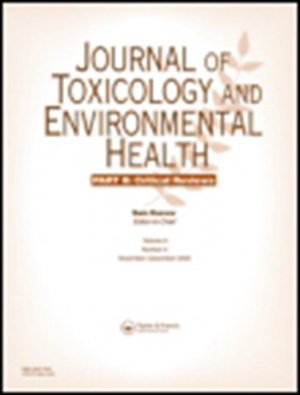职业卫生的快速成型制造:工艺、排放和接触的全面回顾。
摘要
本综述向职业(工业)卫生学家和毒理学家介绍了七种基本的增材制造 (AM) 工艺类别。除板材层压外,46 篇文章报告了所有 AM 工艺的实际测量结果。粉末床熔融 (PBF)、材料喷射 (MJ)、材料挤压 (ME) 和定向能沉积 (DED) 工艺释放的颗粒呈现纳米级到亚微米级;实时颗粒数(迁移率测定仪、凝结核计数器、miniDiSC、电扩散电池)和表面积监测器(扩散充电器)通常足以满足这些工艺的要求。粘合剂喷射(BJ)机可释放 8.5 微米以下的颗粒;光学颗粒测定仪(数量)和激光散射光度计(质量)足以满足该工艺的要求。PBF 和 DED 工艺(粉末状金属原料)释放的颗粒含有呼吸道刺激物(铬、钼)、中枢神经系统毒性物质(锰)和致癌物质(镍)。除使用金属原料的工艺外,所有工艺类别都会释放有机气体,包括(但不限于)呼吸道刺激物(甲苯、二甲苯)、致喘剂(甲基丙烯酸甲酯、苯乙烯)和致癌物(苯、甲醛、乙醛)。总挥发性有机物的实时光离子化检测器为使用聚合物原料材料的工艺提供了有用的信息。需要开展更多的研究来了解:1)影响排放和暴露的设施、机器和原料相关因素;2)皮肤暴露和生物负荷;3)基于任务的暴露。需要统一排放监测和暴露评估方法,以促进研究结果的相互比较。卫生学家需要更好地了解 AM 工艺的排放和暴露情况,以确保为工人提供适当的健康和安全条件,毒理学家也需要更好地了解 AM 工艺的排放和暴露情况,以设计能够准确模拟真实世界暴露条件的实验方案。缩略语 ABS:丙烯腈-丁二烯-苯乙烯;ACGIH® TLV®:美国政府工业卫生学家会议阈限值;ACH:每小时换气次数;AM:增材制造;ASA:丙烯腈-苯乙烯-丙烯酸酯;AVP:丙酮蒸气抛光;BJ:粘合剂喷射;CAM-LEM:计算机辅助制造层压工程材料;CNF:碳纳米纤维;CNT:碳纳米管:CNC :冷凝核计数器;CVP :氯仿气相抛光;DED :定向能沉积;DLP :数字光处理;EBM :电子束熔化;EELS :电子能量损失光谱仪;EDB :电扩散电池;EDX :能量色散 X 射线分析仪;ER :发射率;FDM™ :FFF :熔融长丝制造;IAQ :室内空气质量;LSP :激光散射光度计;LCD :液晶显示屏;LDSA :肺部沉积颗粒表面积;LOD :检测限;LOM :层压物体制造;LOQ :定量限;MCE :混合纤维素酯过滤器;ME :材料挤压;MJ :材料喷射;OEL :职业接触限值;OPS :室内空气质量:OPS:光学颗粒测定仪;PBF:粉末床熔融;PBZ:个人呼吸区;PC:聚碳酸酯;PEEK:聚醚醚酮;PET:聚对苯二甲酸乙二醇酯;PETG:聚对苯二甲酸乙二醇酯;PID:光离子化检测器;PLA:聚乳酸;PM1:空气动力学直径小于 1 µm 的颗粒物质;PM2.5:空气动力学直径小于 2.PSL:塑料板层压;PVA:聚乙烯醇;REL:建议接触限值;SDL:选择性沉积层压;SDS:安全数据表;SEM:扫描电子显微镜;SL:板材层压;SLA:立体光刻;SLM:选择性激光熔融;SMPS:扫描移动式粒子分级机;REL:建议接触限值;SDL:选择性沉积层压;SDS:安全数据表;SEM:扫描电子显微镜;SL:板材层压;SLA:立体光刻;SLM:选择性激光熔融:SVOC:半挥发性有机化合物;TEM:透射电子显微镜;TGA:热重分析;TPU:热聚氨酯;UAM:超声波增材制造;UC:超声波固化;TVOC:总挥发性有机化合物;TWA:时间加权平均值;VOC:挥发性有机化合物;VP:大桶光聚合。This comprehensive review introduces occupational (industrial) hygienists and toxicologists to the seven basic additive manufacturing (AM) process categories. Forty-six articles were identified that reported real-world measurements for all AM processes, except sheet lamination. Particles released from powder bed fusion (PBF), material jetting (MJ), material extrusion (ME), and directed energy deposition (DED) processes exhibited nanoscale to submicron scale; real-time particle number (mobility sizers, condensation nuclei counters, miniDiSC, electrical diffusion batteries) and surface area monitors (diffusion chargers) were generally sufficient for these processes. Binder jetting (BJ) machines released particles up to 8.5 µm; optical particle sizers (number) and laser scattering photometers (mass) were sufficient for this process. PBF and DED processes (powdered metallic feedstocks) released particles that contained respiratory irritants (chromium, molybdenum), central nervous system toxicants (manganese), and carcinogens (nickel). All process categories, except those that use metallic feedstocks, released organic gases, including (but not limited to), respiratory irritants (toluene, xylenes), asthmagens (methyl methacrylate, styrene), and carcinogens (benzene, formaldehyde, acetaldehyde). Real-time photoionization detectors for total volatile organics provided useful information for processes that utilize polymer feedstock materials. More research is needed to understand 1) facility-, machine-, and feedstock-related factors that influence emissions and exposures, 2) dermal exposure and biological burden, and 3) task-based exposures. Harmonized emissions monitoring and exposure assessment approaches are needed to facilitate inter-comparison of study results. Improved understanding of AM process emissions and exposures is needed for hygienists to ensure appropriate health and safety conditions for workers and for toxicologists to design experimental protocols that accurately mimic real-world exposure conditions.ABBREVIATIONS ABS : acrylonitrile butadiene styrene; ACGIH® TLV® : American Conference of Governmental Industrial Hygienists Threshold Limit Value; ACH : air change per hour; AM : additive manufacturing; ASA : acrylonitrile styrene acrylate; AVP : acetone vapor polishing; BJ : binder jetting; CAM-LEM : computer-aided manufacturing of laminated engineering materials; CNF : carbon nanofiber; CNT : carbon nanotube; CP : co-polyester; CNC : condensation nuclei counter; CVP : chloroform vapor polishing; DED : directed energy deposition; DLP : digital light processing; EBM : electron beam melting; EELS : electron energy loss spectrometry; EDB : electrical diffusion batteries; EDX : energy dispersive x-ray analyzer; ER : emission rate; FDM™ : fused deposition modeling; FFF : fused filament fabrication; IAQ : indoor air quality; LSP : laser scattering photometer; LCD : liquid crystal display; LDSA : lung deposited particle surface area; LOD : limit of detection; LOM : laminated object manufacturing; LOQ : limit of quantitation; MCE : mixed cellulose ester filter; ME : material extrusion; MJ : material jetting; OEL : occupational exposure limit; OPS : optical particle sizer; PBF : powder bed fusion; PBZ : personal breathing zone; PC : polycarbonate; PEEK : poly ether ether ketone; PET : polyethylene terephthalate; PETG : Polyethylene terephthalate glycol; PID : photoionization detector; PLA : polylactic acid; PM1 : particulate matter with aerodynamic diameter less than 1 µm; PM2.5 : particulate matter with aerodynamic diameter less than 2.5 µm; PM10 : particulate matter with aerodynamic diameter less than 10 µm; PSL : plastic sheet lamination; PVA : polyvinyl alcohol; REL : recommended exposure limit; SDL : selective deposition lamination; SDS : safety data sheet; SEM : scanning electron microscopy; SL : sheet lamination; SLA : stereolithography; SLM : selective laser melting; SMPS : scanning mobility particle sizer; SVOC : semi-volatile organic compound; TEM : transmission electron microscopy; TGA : thermal gravimetric analysis; TPU : thermo polyurethane; UAM : ultrasonic additive manufacturing; UC : ultrasonic consolidation; TVOC : total volatile organic compounds; TWA : time-weighted average; VOC : volatile organic compound; VP : vat photopolymerization.

 求助内容:
求助内容: 应助结果提醒方式:
应助结果提醒方式:


